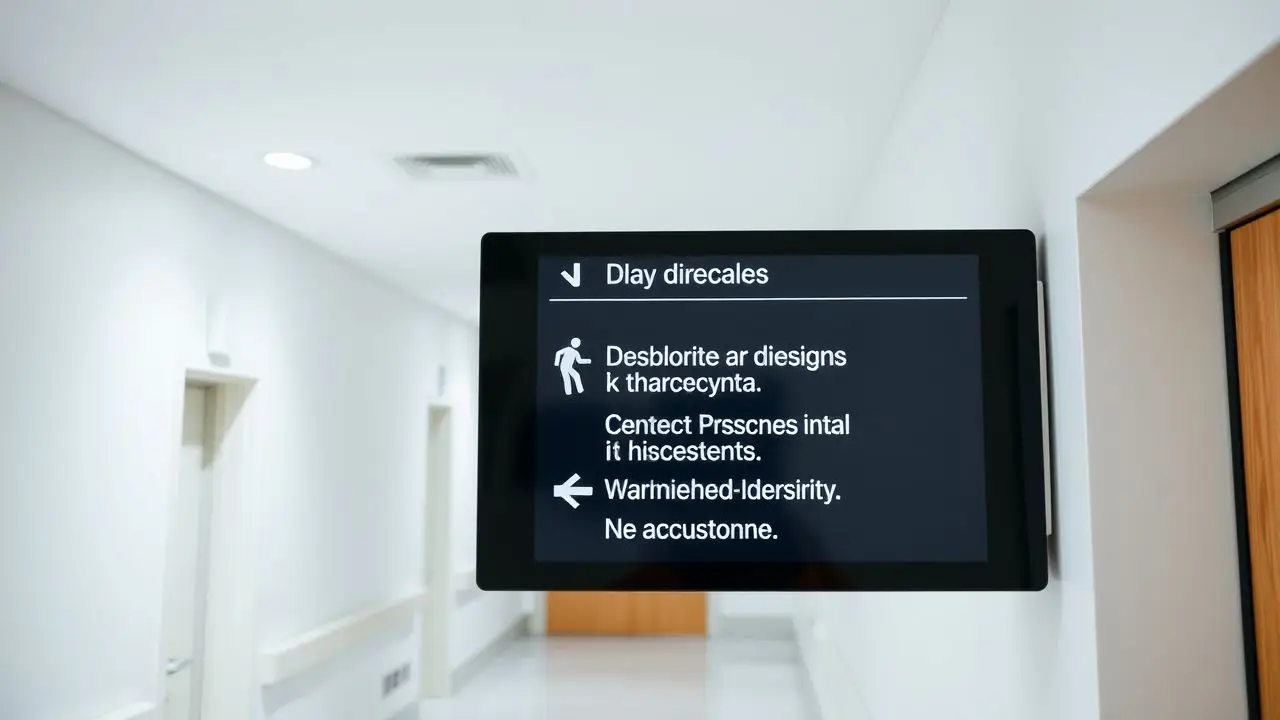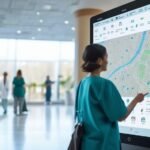Finding your way in a hospital can be hard. Digital signs make it easier. This blog will show how these signs help keep visitors safe and informed. Keep reading to learn more!
Key Takeaways
- Digital signs in hospitals help visitors find where they need to go and share important updates. They show maps, menus, and health tips.
- These signs keep everyone safe by showing COVID-19 guidelines at entrances and helping manage how many people are inside the hospital.
- Signs reduce stress for patients and families by giving them real-time information about wait times and treatments. This makes the visit smoother.
Table of Contents
ToggleHow Digital Signs Improve Hospital Operations
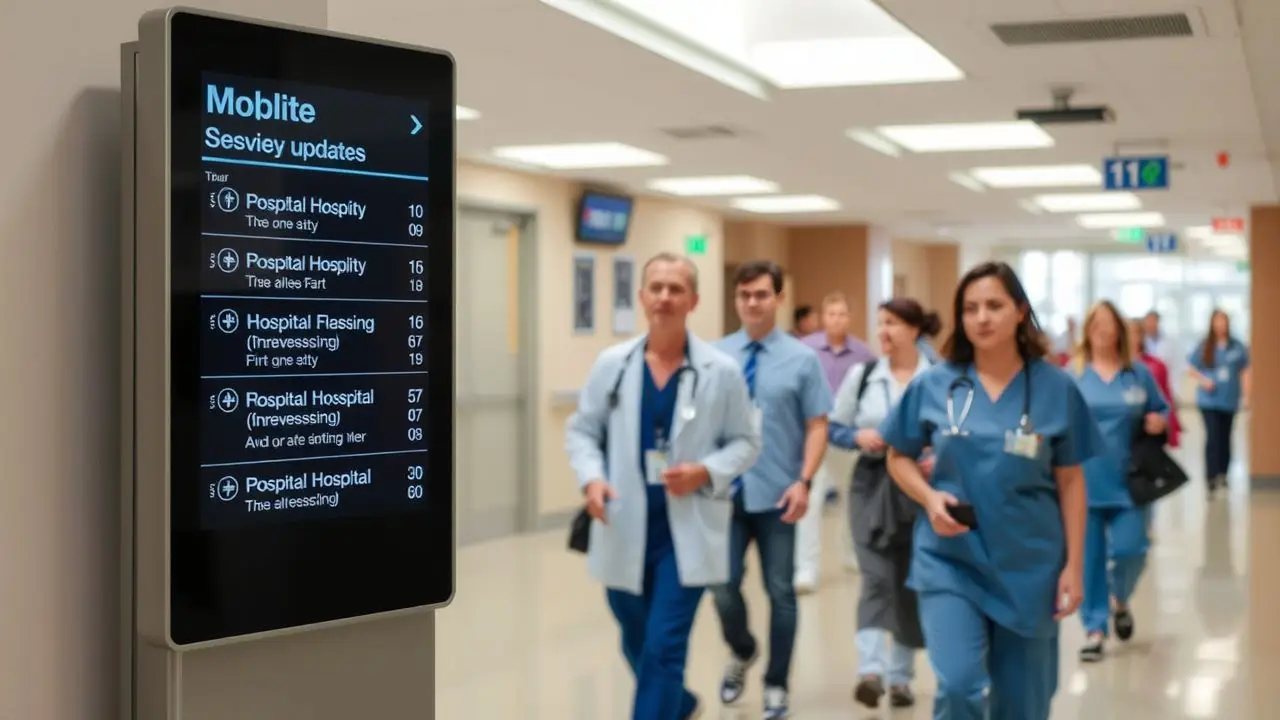
Digital signs make it easier for people to find their way around hospitals. They also help staff share important updates quickly and clearly.
Directories & wayfinding
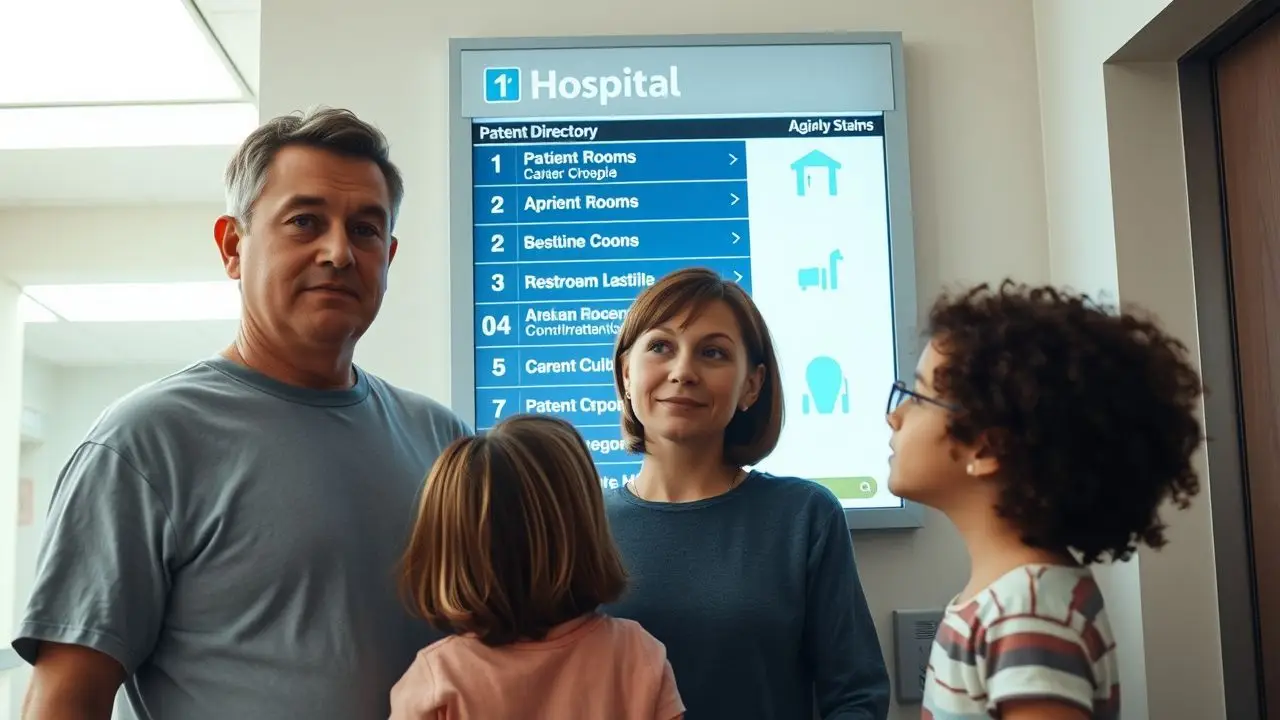
Directories and wayfinding signs help visitors find their way in a hospital. These digital signs show maps and directions to important areas like patient rooms, waiting areas, and restrooms.
They make it easy for people to locate what they need without feeling lost.
Clear signs can reduce stress for families and patients. They provide step-by-step instructions on how to reach specific locations. This helps everyone feel more at ease during their visit.
With the right healthcare signage, hospitals can support smooth navigation through busy spaces.
Staff communication
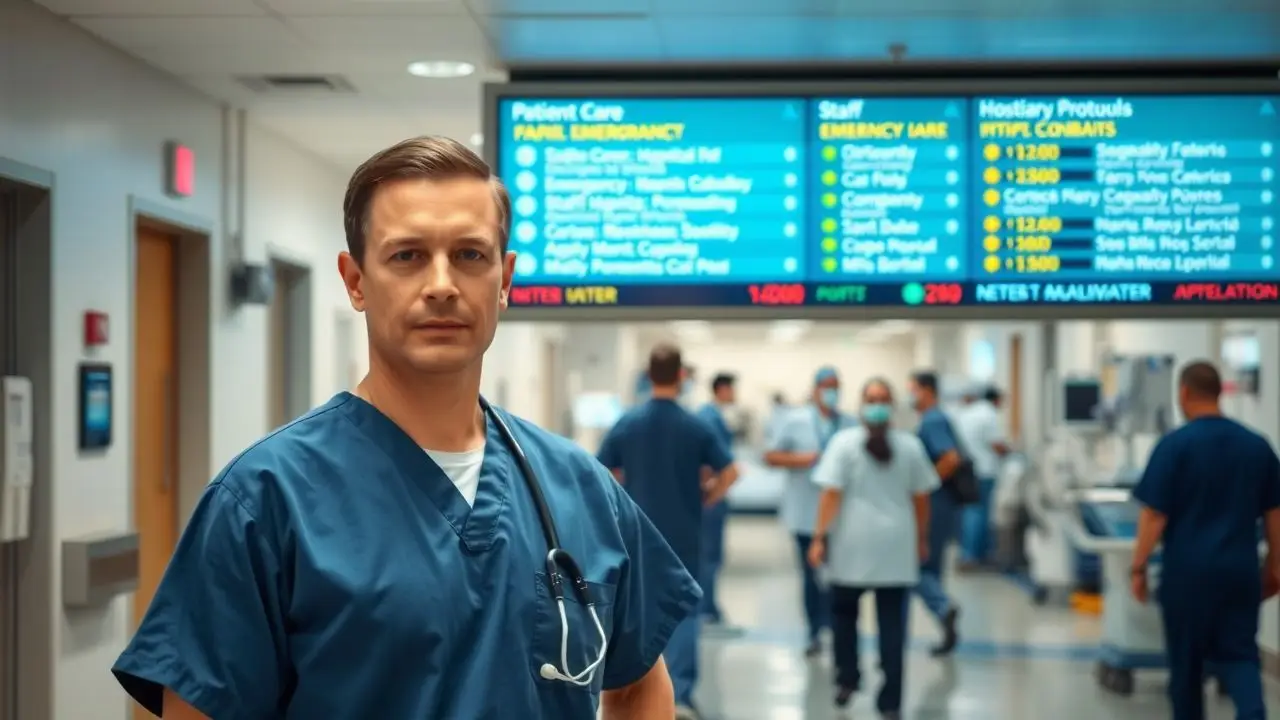
Digital signs improve staff communication in hospitals. These signs share important messages quickly and effectively. Staff can see updates about schedules, events, or emergencies right away.
This helps everyone stay informed.
With hospital digital displays, team members get real-time hospital updates. They can receive alerts for changes in patient care or emergency protocols. Effective messaging leads to better teamwork and quicker responses during critical situations.
Digital information boards for hospitals keep everyone connected and focused on patient care.
Patient information
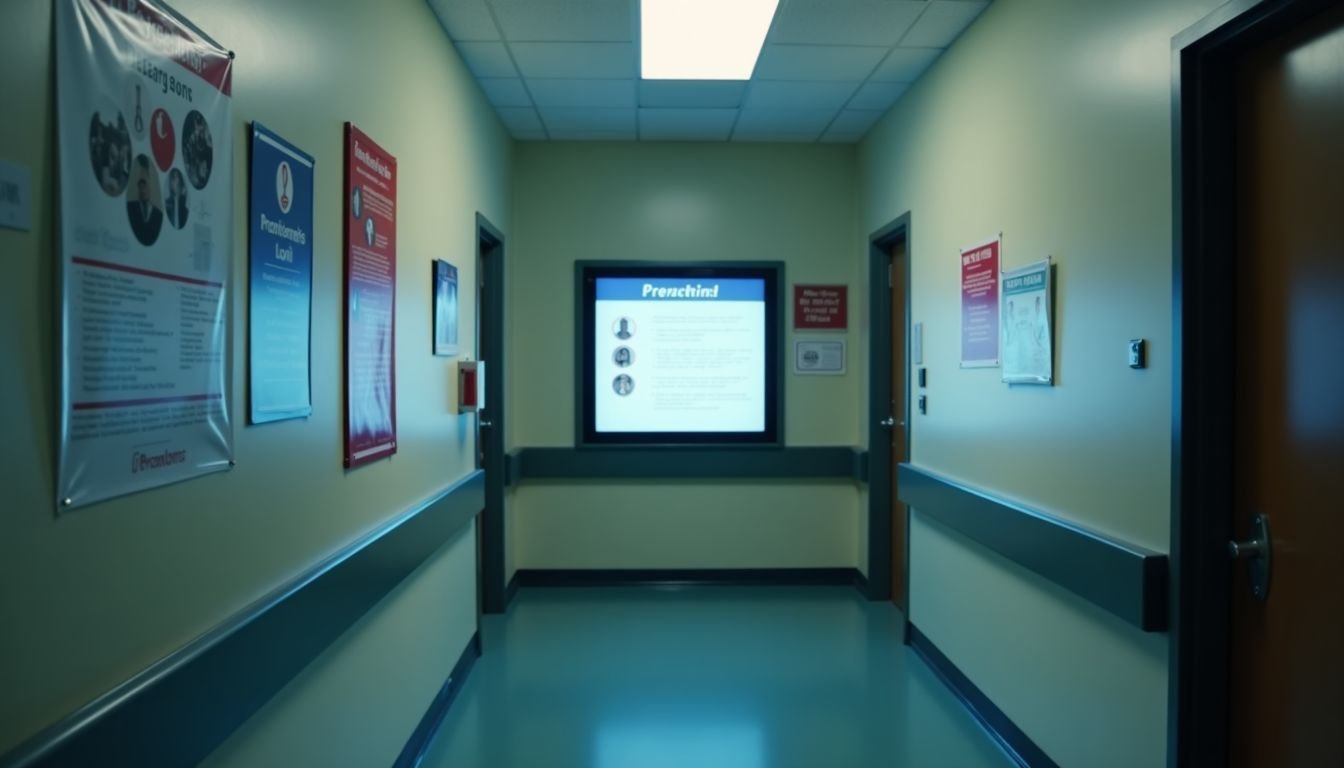
Patient information displays keep visitors informed in hospitals. These screens share important updates about patients’ conditions and treatment plans. People can learn how their loved ones are doing without waiting for long periods.
Real-time hospital updates help families stay connected during difficult times. They reduce anxiety by providing current details. This way, everyone knows what to expect, making the experience less stressful.
Hospital communication systems use these digital signs to improve patient experiences and enhance visitor guidance in healthcare settings.
Cafeteria & cafe menus
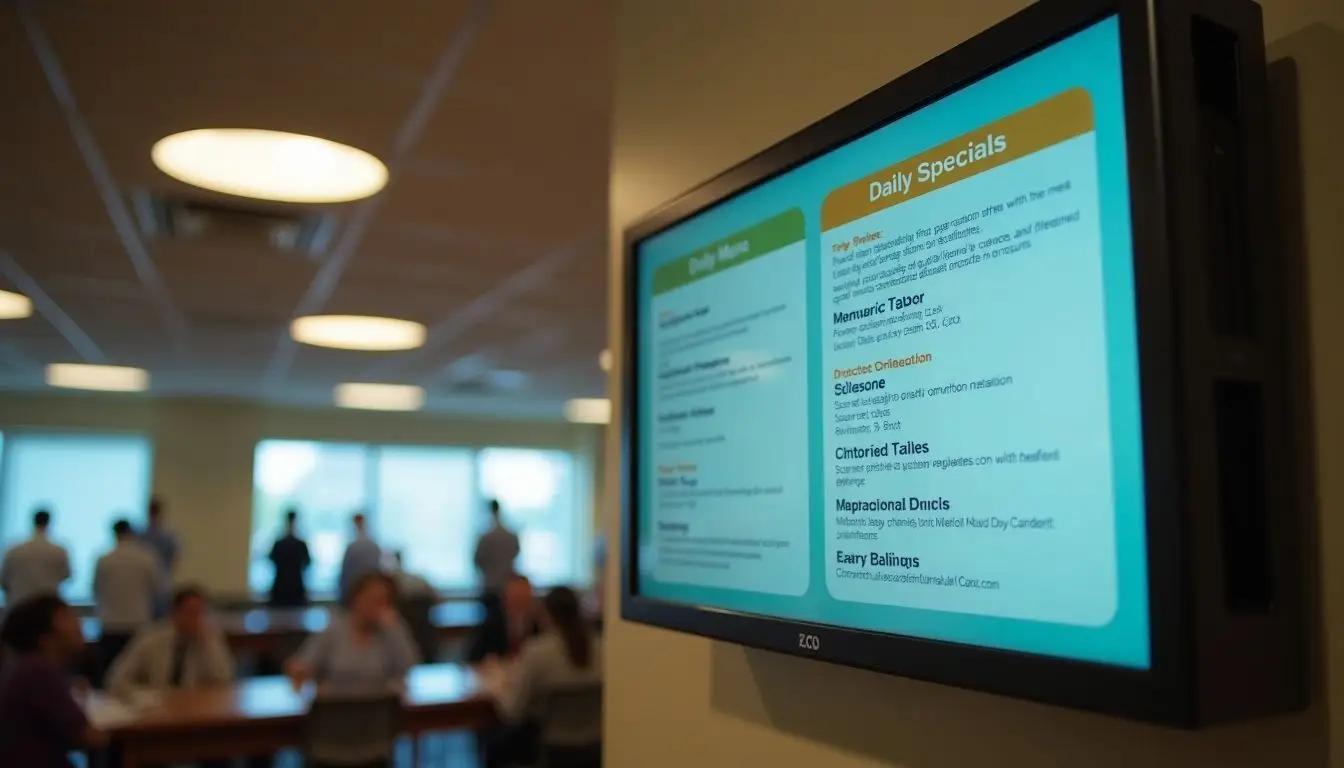
Digital signs display cafeteria and cafe menus in hospitals. Visitors can easily see what food is available. They show the daily specials, healthy options, and dietary information.
This helps patients and their families make better choices.
Screens also update menu items in real-time. If a dish runs out, the sign changes quickly to prevent disappointment. First-hand experience shows that these digital displays reduce confusion about meals.
Overall, digital signage improves visitor guidance in hospitals by keeping everyone informed about food options.
Donor recognition
Donor recognition is essential in hospitals. Digital signs show appreciation for those who give. Names of donors can appear on screens throughout the building. This not only honors their contributions but also inspires others to donate.
Visible displays highlight donor generosity and support hospital needs. They create a sense of community and pride among visitors and staff. Showing gratitude helps build lasting relationships with contributors.
It plays a crucial role in fundraising efforts, ensuring continued support for patient care improvements.
Ensuring Safety for Hospital Visitors with Digital Signs
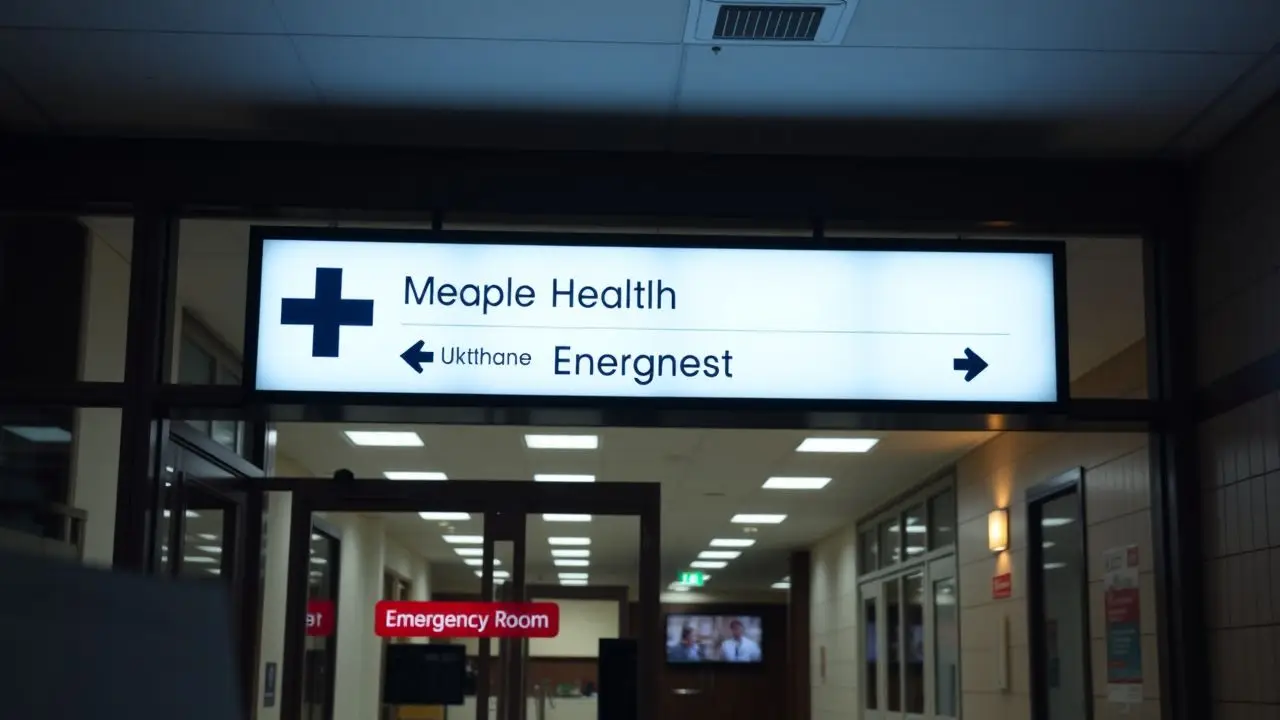
Digital signs help keep hospital visitors safe. They provide important health information and guide people to the right areas quickly.
Use at entrances to screen for COVID-19 symptoms
Digital signs at hospital entrances help screen for COVID-19 symptoms. They provide quick checks for fever or other signs of illness. Visitors can see alerts and guidelines before entering.
This keeps everyone safer.
These screens display simple questions about health. People answer them quickly to complete the screening process. Hospitals can reduce risks of spreading germs this way. Using electronic signs ensures a safe environment inside the facility while keeping visitors informed about safety measures and protocols related to health care communication.
Wayfinding kiosks for efficient navigation
Wayfinding kiosks help visitors find their way in hospitals. These interactive screens show maps and directions. They are easy to understand and use. Visitors can quickly see where they need to go.
This makes hospital navigation smoother.
Hospitals place these kiosks in high-traffic areas. People can access them near entrances or waiting rooms. They reduce confusion and frustration for patients and families. These signs play a key role in improving the patient experience by ensuring everyone finds their destination with ease.
Strategically placed to alleviate pain points
Digital signs in hospitals are placed where people need them most. Locations like entrances and waiting areas help visitors find their way quickly. Signs show directions to different departments or rooms.
This makes hospital information displays clear and easy to read.
Staff can update these signs at any time. They can share important messages about safety or health tips. Easily accessible digital communication in healthcare helps keep patients informed.
With clear signage, the stress of finding a way is lessened for everyone inside the facility.
Monitor and maintain maximum capacity
Hospitals often face the challenge of managing the number of visitors. Digital signs help monitor and maintain maximum capacity. These signs display real-time updates on visitor counts in waiting areas and patient rooms.
By doing this, they allow staff to manage space effectively.
Clear information keeps everyone safe and reduces crowding. When the hospital reaches its limit, digital signs can inform guests to wait or visit later. This ensures that patients receive care without feeling overwhelmed by too many visitors at once.
Safety is a top priority, and effective signage plays a key role in hospital wayfinding and visitor safety measures.
Convey health and safety information
Digital signs display health and safety information clearly. They help to inform visitors about COVID-19 symptoms. Signs may list symptoms like fever, cough, or loss of taste. This messaging keeps everyone alert and safe.
In addition, signs can share guidelines for handwashing or mask-wearing. Real-time updates help visitors follow important rules. Clear instructions ensure people know what to do in different situations.
These steps create a safer environment for all who enter the hospital.
Enhancing the Visitor Experience with Digital Signs

Digital signs create a calm space for visitors. They help reduce stress by providing updates and clear information.
Creating a calm and positive atmosphere
Hospitals can feel overwhelming. Digital signs help create a calm and positive atmosphere for visitors. Bright colors and clear messages reduce stress. Soft images on screens can comfort worried families.
These signs offer friendly greetings as people walk in. Upbeat messages help lift spirits during tough times.
Visitors get important updates easily with digital displays. Screens show wait times, directions, and health tips clearly. This information keeps everyone informed without adding to anxiety.
Interactive kiosks let family members find their way quickly too. Smart hospital signage helps each person feel cared for while they focus on their loved ones’ needs.
Reducing stress and anxiety
Digital signs help reduce stress and anxiety for hospital visitors. Clear messages on screens give people vital information about wait times, directions, and services. This helps families know what to expect as they wait for care.
Patients feel less anxious when they see updates in real time. These signs also provide comforting messages and visuals that create a calm atmosphere.
In waiting rooms, digital displays show important updates like how long a procedure will take. Knowing this information can ease worry for both patients and their loved ones. Up-to-date health advice is also shared through these signs, helping visitors stay informed about safety measures at the facility.
With efficient communication from digital signs, hospitals enhance the patient experience by making visits smoother and more manageable.
Keeping visitors updated in waiting rooms
Keeping visitors informed in waiting rooms is vital. Digital signs show real-time hospital updates. These screens display wait times for appointments and estimated durations for procedures.
Patients and families stay aware of any changes to their care.
These clear messages reduce stress and anxiety. Visitors appreciate knowing what to expect during their time at the hospital. Patient information displays create a calm atmosphere, making the wait less nerve-wracking.
Effective healthcare communication through digital signs helps everyone feel more secure and informed while they wait.
Individualized patient care
Digital signs play a key role in individualized patient care. They can show information specific to each patient’s needs. For example, signs can share updates about treatment plans or give details on upcoming visits.
These screens also help staff communicate important messages directly to patients. This ensures that everyone gets the right information at the right time. Clear communication through digital signs improves the overall patient experience and supports better health outcomes during their stay.
Real-time communication
Real-time communication is key in hospitals. Digital signs keep visitors informed with updates. They show wait times, appointment changes, and other important news. This information helps reduce confusion for families and friends.
It can ease worries during stressful hospital visits.
First-hand experience shows that clear messaging from digital signs boosts patient comfort. Visitors know what to expect as they wait for their loved ones. Updated health guidelines also appear on these screens.
Safety signs guide everyone through the facility while sharing vital information about COVID-19 precautions. Real-time updates make a big difference in the visitor experience at medical facilities.
Conclusion
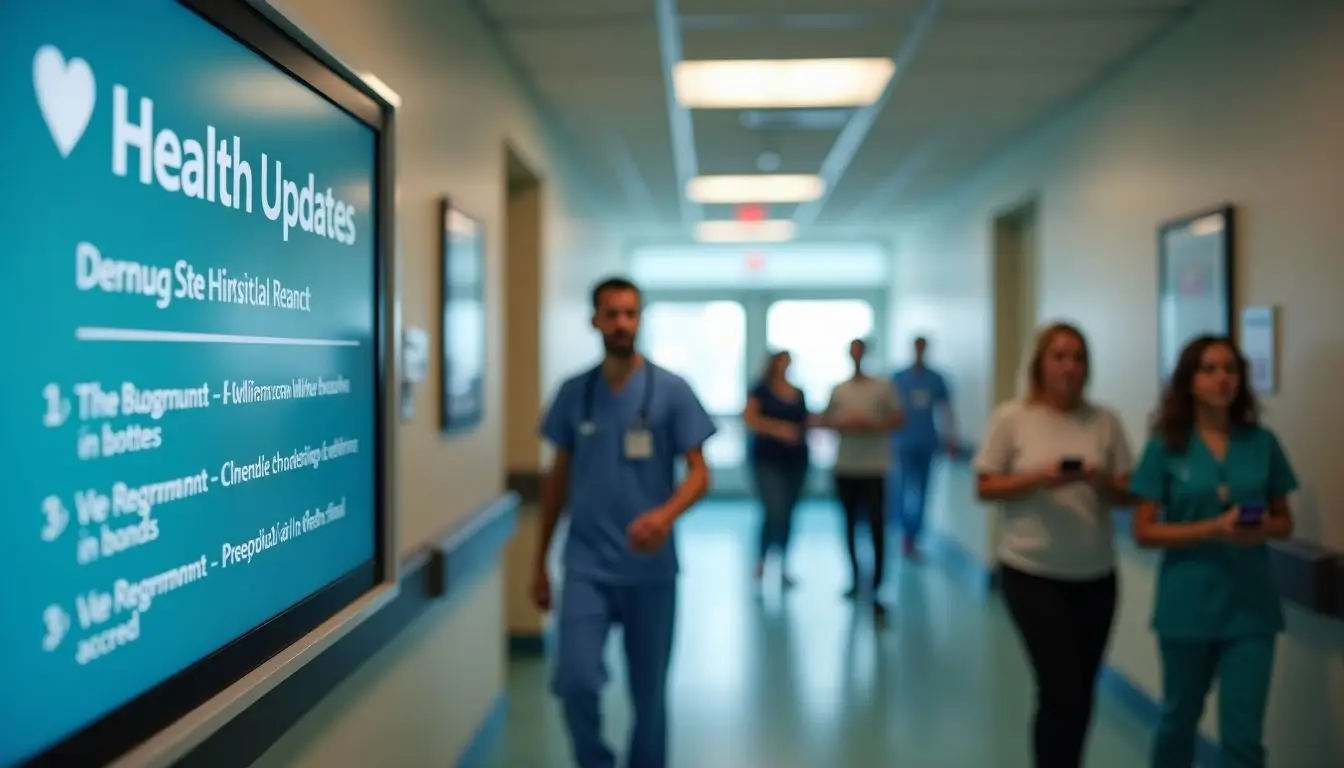
Digital signs play a key role in hospitals. They keep visitors informed and safe. Signs show directions, menus, and health updates. Clear messages reduce stress and help people find their way.
With these signs, hospitals create a better experience for everyone.
FAQs
1. How do digital signs improve patient experience in hospitals?
Digital signs help to improve the patient experience by providing real-time hospital updates and visitor information. This helps to keep everyone informed and safe.
2. What is the role of medical facility navigation in healthcare facilities?
Medical facility navigation, like a hospital navigation system or wayfinding solutions for healthcare, plays a crucial role in guiding visitors around the premises efficiently. The use of digital signs as hospital directional signage aids this process significantly.
3. How does healthcare facility messaging contribute to safety in hospitals?
Healthcare facility messaging through public information screens ensures that vital updates are communicated promptly to all visitors, contributing greatly to their safety within the medical facility.
4. Why is it important for hospitals to have effective wayfinding solutions?
Effective wayfinding solutions such as digital signs not only guide visitors but also enhance their overall experience by reducing confusion and stress associated with navigating large medical facilities.
